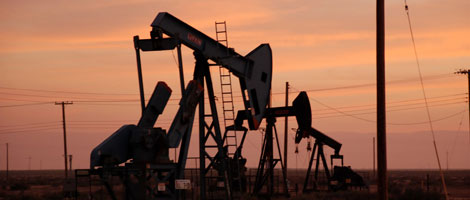It hasn’t exactly been a great few months oil shale producers in the Permian Basin.
Shares of Pioneer Natural Resources (PXD), the biggest pure play on Permian oil, closed at $169.97 a share today, August 29, down from $212.31 a share on May 18. That’s a decline of 17.3% at a time when prices for benchmark crude such as West Texas Intermediate and Brent has been climbing. Shares of peer Permian producer Diamondback Energy (FANG) are down 10.5% over the same period.
The problem? Rapidly rising production from the Permian Basin has overwhelmed pipeline capacity so that companies can’t get all their oil to market. Oil companies in that one basin now produce more than 3.3 million barrels a day, according to estimates from the U.S. Energy Information Administration. That’s more than a big Persian Gulf producer such as the United Arab Emirates produced on average in 2017.
In the second quarter of 2018 all pipelines taking oil out of the basin to refineries or shipping terminals were running at full capacity. That was up from 94% of capacity in the first quarter.
Those pipeline bottlenecks have led to a huge gap between the market price for West Texas Intermediate and Permian Basin oil. At the end of July the spread was a huge $16 a barrel. Today, September 12, the gap was $9.41 a barrel.a
And the problem is forecast to get worse before new pipelines now under construction or on the drawing boards go into operation. How long it might be before the bottlenecks get resolved by new construction is a hugely popular guessing game among oil industry analysts. Estimates range from an optimistic middle of 2019 to a pessimistic second quarter of 2020. The projections are a moving target due to factors such as the delays and cost increases resulting from of the Trump administration’s tariffs on imported steel on pipeline projects to delays in acquiring and approving rights of way.
The result is that producers in the basin will cut back on drilling and production. Morgan Stanley has projected that annual production growth in the Permian Basin in 2019 will total just 360,000 barrels a day, well below Wall Street estimates at the end of the June quarter for growth of 650,000.
You can clearly see the effects of these pipeline bottlenecks in the second quarter earnings report of a Permian producer such as Pioneer Natural Resources. In the second quarter sales volume averaged 328 thousand barrels of oil equivalent a day. But during the second quarter the company transported only 165 thousand barrels of oil equivalent a day to the Gulf coast where it was sold to refineries or exported to international refineries. The company noted that the average realized price for oil was $61.20 in the second quarter. No wonder that second quarter earnings were 9 cents a share below the Wall Street estimate.
The problem is that while many of the fundamentals for Permian Basin oil shale producers remain intact–potential production is still growing and producing oil from this formation is still remarkably cheap–Pioneer forecasts that it’s production costs in the third quarter will average $$9.50 to $11.50 per barrel of oil equivalent–there’s just that little matter of the uncertainty about how long it will take to resolve the pipeline bottlenecks in the basin. It make a difference whether the schedule is the middle of 2019 or the second quarter of 2020.
That’s especially true if you hold call options on any of the Permian producers as I do with the January 18 2019 call options on Pioneer Natural Resources (with a strike price of $180) in my Volatility Portfolio. It looks unlikely that these options will move into the money by January 18, 2019–right now they’re down by 68% from my purchase price back on February 25, 2018.
But it’s true to a degree even if you hold the shares themselves. (I own shares of Pioneer Natural Resources in my 50 Stocks Portfolio and shares of Diamondback Energy in my Jubak Picks Portfolio.) That’s because some of the fundamental ground is shifting under the feet of producers in the Permian Basin. For example, there’s been so much fracking in the Permian Basin that companies have run out of the most convenient places for disposing of the toxic mix of water, fracking chemicals and sand that they have pumped into the ground to force the oil trapped in their shales to the surface. That means companies have to send their waste water further away for underground injection or treat it for reuse. That drives up the cost of production. As does the labor shortage in the basin and periodic shortfalls in supplies and equipment. None of these higher costs are higher enough to destroy the fundamentals of Permian Basin oil and natural gas production, but these higher costs do cut profit margins. That’s especially an issue for companies that aren’t operating in the lowest cost parts of the basin or that have top heavy debt loads to support from cash flow.
So what do I recommend doing?
I’d look to see those January 2019 call options. The uncertainties about when the bottlenecks will be resolved are just too great. I wouldn’t sell quite yet, though. The November 4 U.S. deadline for getting allies to reimpose sanctions on Iranian oil production are likely to lead to rising volatility in oil prices in the run up to the deadline. I’d hold on and sell closer to that November 4 date.
I’m not happy with the losses that my holdings of the shares of Pioneer and Diamondback have produced. But the advantage of holding shares is that they don’t expire as options do. I think the transportation picture in the basin will gradually produce, first, a trickle of good news and then a steady flow of the same. So I’d recommend holding onto positions in those two stocks for the longer term recovery.


